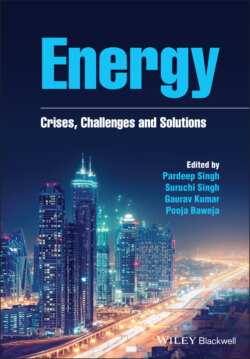Читать книгу Energy - Группа авторов - Страница 69
2.3.6 Ocean Energy
ОглавлениеAs we know, 70% of the earth's surface is covered by water in different forms. Ocean energy also known as blue energy is present in the form of tidal, current, wave, temperature gradient and salinity gradient energy. Electricity could be generated using energy possessed by all the different types of ocean energy. IRENA 2020 report (IRENA 2020b) states that electricity generation capacity of ocean energy till 2019 was 500 MW, very small contribution compared with capacity of other alternative sources of energy. Approximately 1.7 GW is under development (Wilberforce et al. 2019). Compared with other alternative sources of energy, ocean energy is steady and predictable (especially tidal range technology) making it a right choice for power production in future (Crus 2008, pp. 70–75). Looking at the promising potential of ocean energy, various researches are going worldwide to see the feasibility of how to harness this energy (Wilberforce et al. 2019). Most of researches were aimed to pinpoint best possible locations for ocean energy exploitation, energy conversion efficiency of various technologies used in ocean energy sector and consequences of several technologies on the marine ecosystem as well as on the environment, as this is a raising concern about the usage of ocean energy technologies. This is a clean form of energy, GHGs emissions are negligible and assumed to be environment‐friendly. Despite all these factors, its share in energy sector is very small at present.
Around the globe, mainly four types of ocean energy are harnessed to generate electricity, namely wave, ocean thermal energy conversion (OTEC), tidal and salinity gradient energy. Out of all these forms, tidal range share with respect to generation capacity is approximately 99%. Currently, contribution of other forms is not significant but many projects are under development based on OTEC, tidal stream and wave energy (Kerr et al. 2015). On completion of various current projects share of OTEC, tidal stream and wave energy will become noticeable. Theoretical maximum capacity of all projects which are under construction will be 15 GW (Wilberforce et al. 2019). Major contributors in the commercialized marine technology are the United States and United Kingdom (UK) along with small share of South Korea, Ireland, The Netherlands and China.
